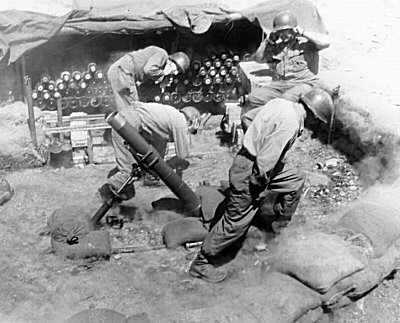
| Year | 1942 |
| Weapon Type | [@type] |
| Origin & Designer | [@designer] |
| Numbers Produced | 6.675 |
| Crew | 8 (Squad Leader, Gunner, Loader & 5 x Ammunition Bearers) |
| Calibre | 107mm |
| Elevation | +45° to +59° |
| Traverse | 7° |
| Cartridge Weight | [@cartridge_weight] |
| Round Weight | 11.58 kg HE/Smoke |
| Barrel Length | 1.220mm |
| Overall Length | [@length] |
| Grenade Types | [@grenade_types] |
| Mount | [@mount] |
| Combat Weight | 149.8 kg |
| Operation | [@operation] |
| Cooling System | [@cooling] |
| Sights | [@sights] |
| Feed | [@feed] |
| Practical Rate of Fire | 5 r.p.m. |
| Maximum Rate of Fire | 12 r.p.m. |
| Blank Cartridge | [@blank_cartridge] |
| Muzzle Velocity | 256 m/s |
| Fuel Capacity | [@fuel_capacity] |
| Minimum Range | 548m |
| Effective Range | [@effective_range] |
| Maximum Range | 2.195m |
| Armour Penetration | [@armour_penetration] |
| Bayonet | [@bayonet] |
| Traction | [@traction] |
| Variants | [@variants] |
| Notes | Built on the same lines as the British Stokes mortar, the 4.2in Mortar was originally designed for laying smoke, when WW2 broke out the U.S. Army developed an HE round which turned the 4.2in into a very useful heavy support weapon. It was issued to independent heavy mortar battalions and issued at divisional level. |